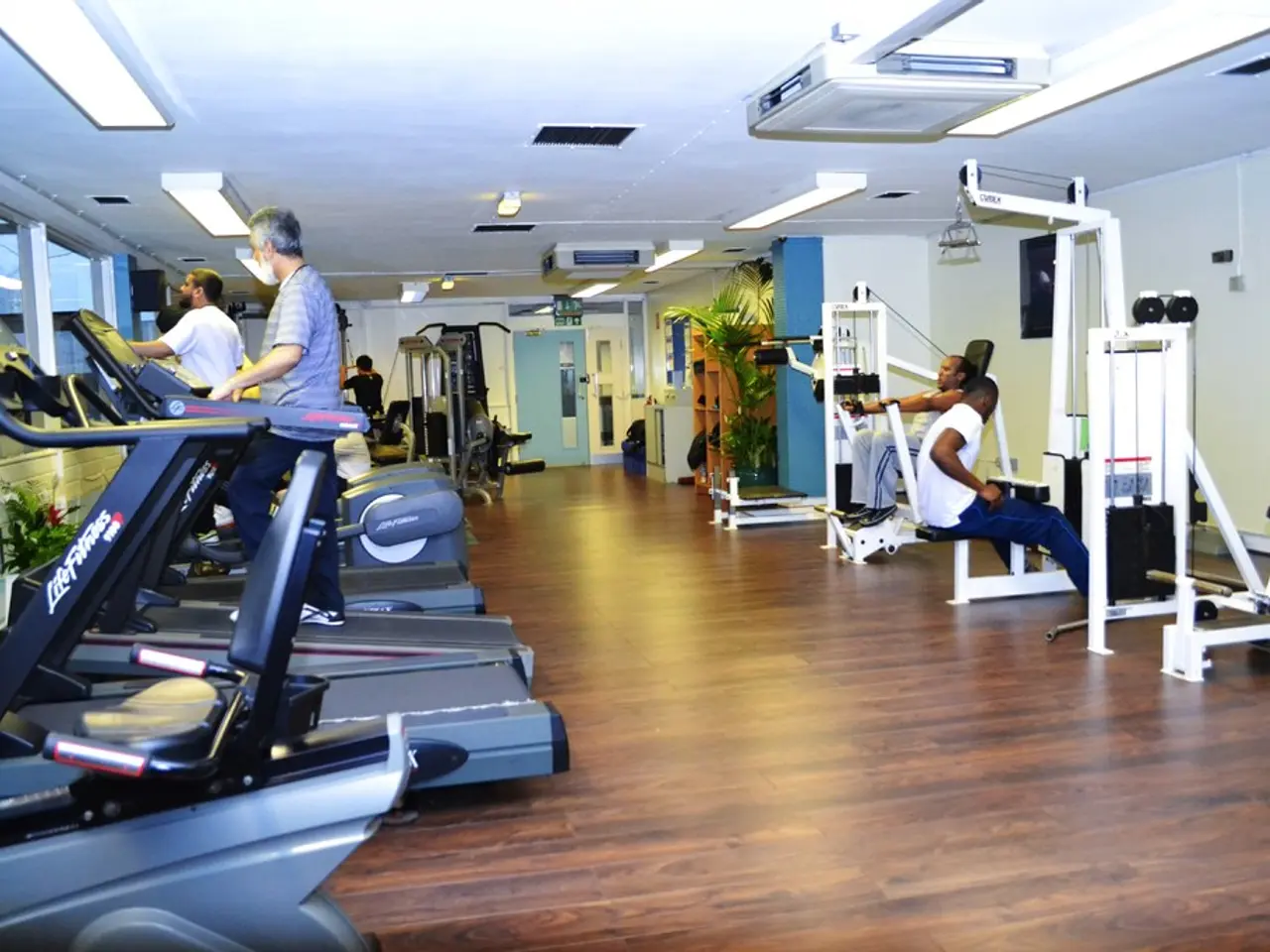Comprehensive Calisthenics Training Program Suitable for Every Fitness Capacity
Calisthenics, a form of exercise that uses only a person's body weight for resistance, can be a great way to build strength and improve fitness. Here's a guide to help beginners modify calisthenics exercises for a suitable workout plan.
Starting with Assisted Variations
For push-ups, instead of regular push-ups, beginners can start with knee push-ups. For squats, assisted squats can be done by holding onto a stable object. Replace jump lunges with static lunges to reduce impact on knees.
Focusing on Foundational Exercises
Focus on basic calisthenics moves such as push-ups, pull-ups (with assistance if needed), squats, planks, and lunges.
Structuring Your Workout Plan
Beginners should follow a schedule that allows 48-hour rest between sessions for recovery, alternating circuits and incorporating rest days.
Modifying Intensity
To make exercises easier, use incline push-ups or assisted movements. To increase challenge, do standard or decline push-ups, pistol squats, slow eccentric phases, or add resistance such as a weighted vest or resistance bands.
Keeping Workout Sessions Manageable
Start with around 15-20 minutes focusing on 4-8 exercises per session, gradually increasing as endurance and strength improve.
Following a Repeatable Plan
For example, alternate two beginner sessions twice a week each over 4-8 weeks before advancing to harder variations or additional volume.
Safety First
It's crucial to modify exercises as a person's strength, muscular endurance, and skill progress. If they have underlying injuries or trouble performing basic movements, consult a doctor or physical therapist.
- Incorporating physical assistance can help predict and manage discomfort like migraines during calisthenics workouts, as some beginner variations, like assisted squats, allow for reduced impact.
- The science of health-and-wellness suggests that individuals struggling with depression might find solace in the predictive nature of a calisthenics routine, as it offers a structured approach to fitness-and-exercise that can help improve their mental wellbeing.
- To ensure a safe and enjoyable calisthenics journey, following a repeatable plan for four to eight weeks with regular breaks and gradually increasing the intensity can prevent aggravation of existing conditions like aq (an injury or ailment).




